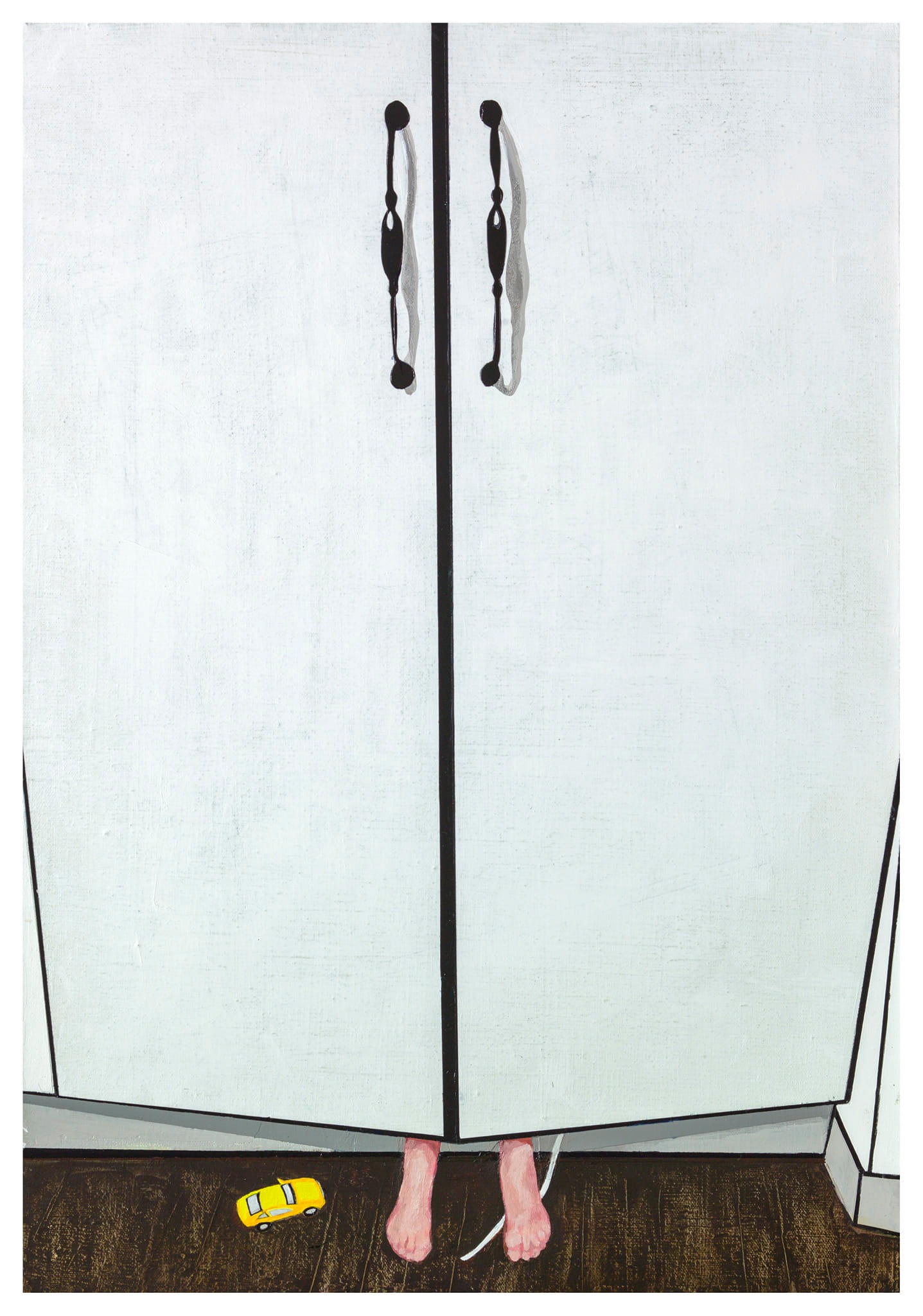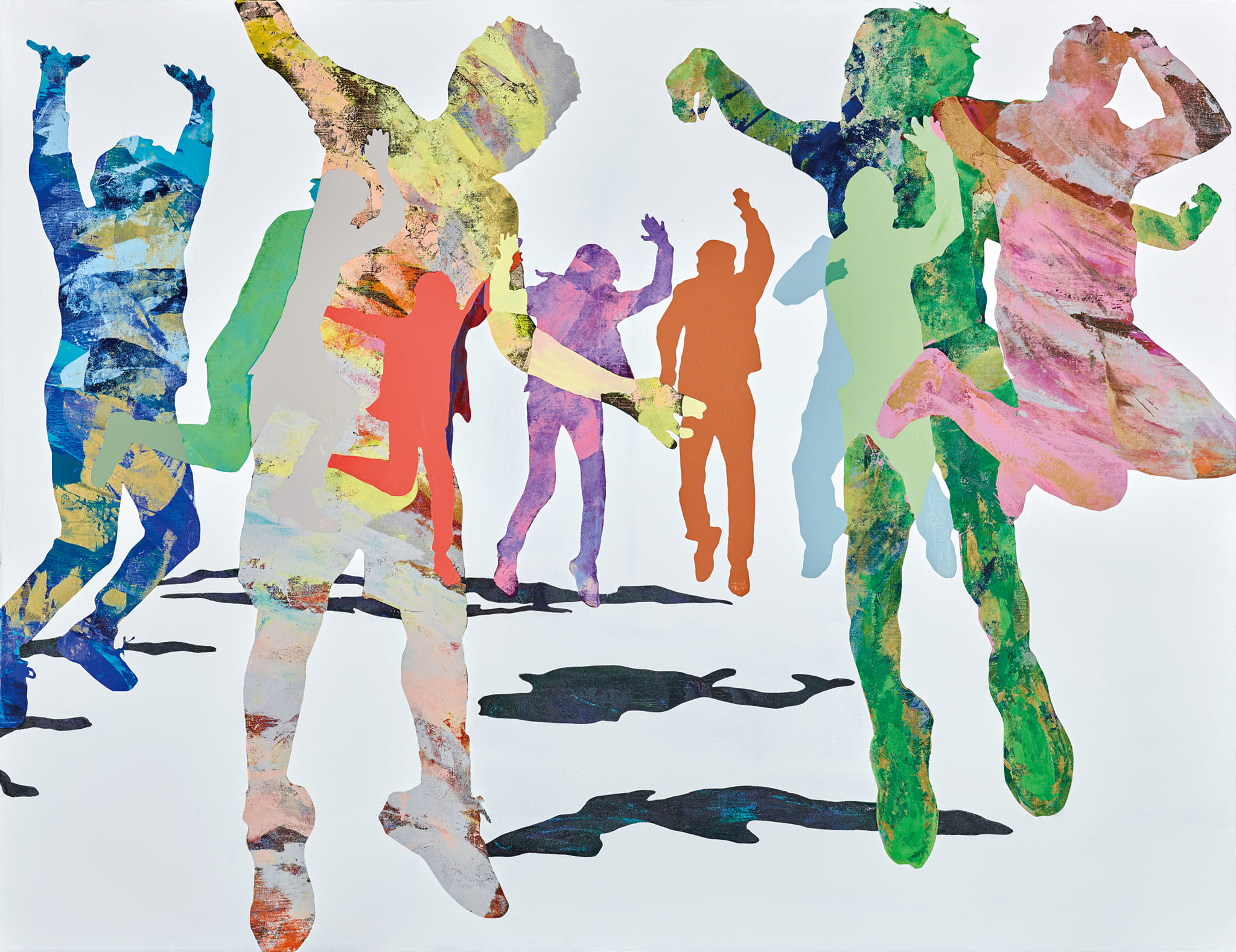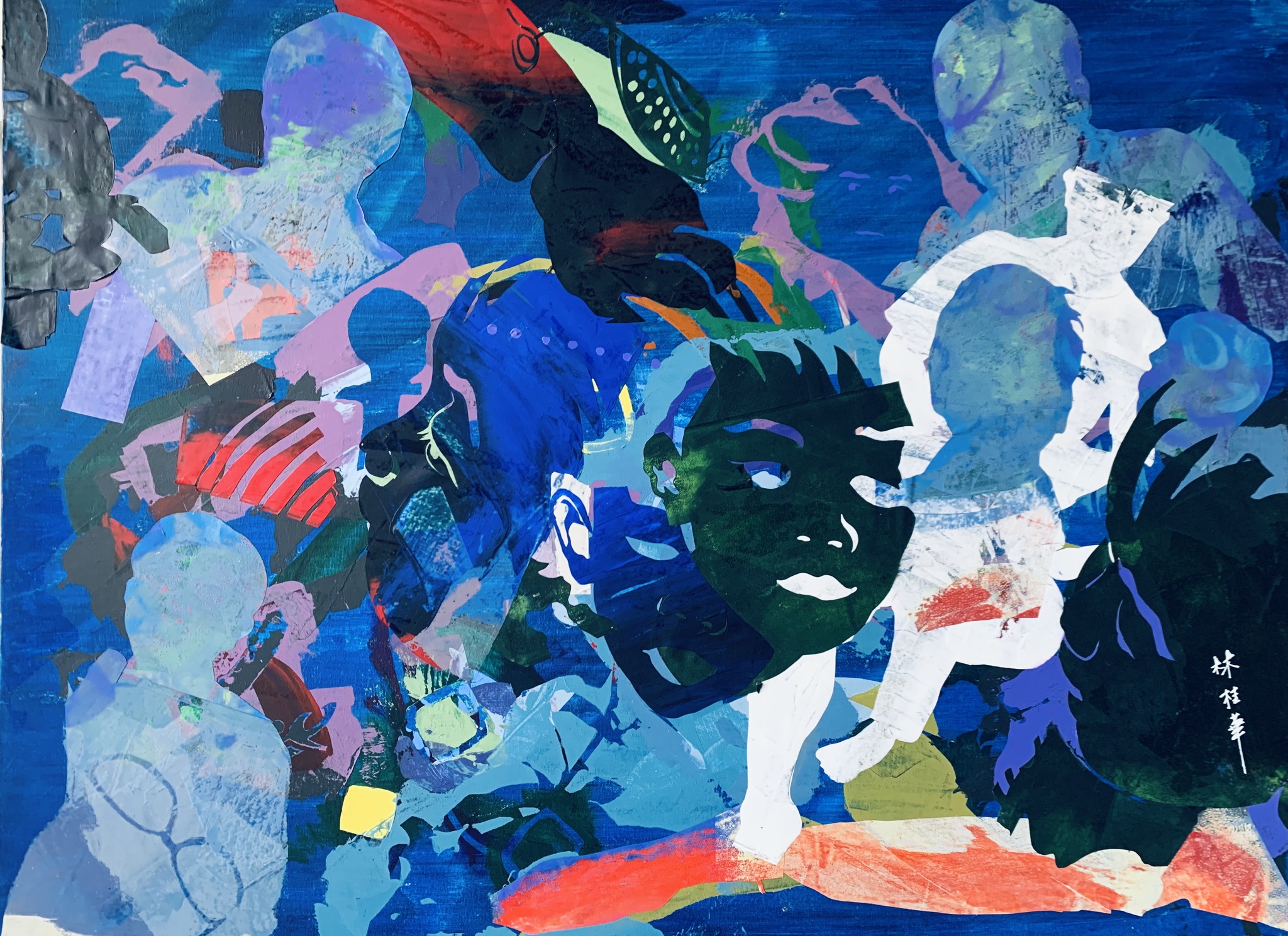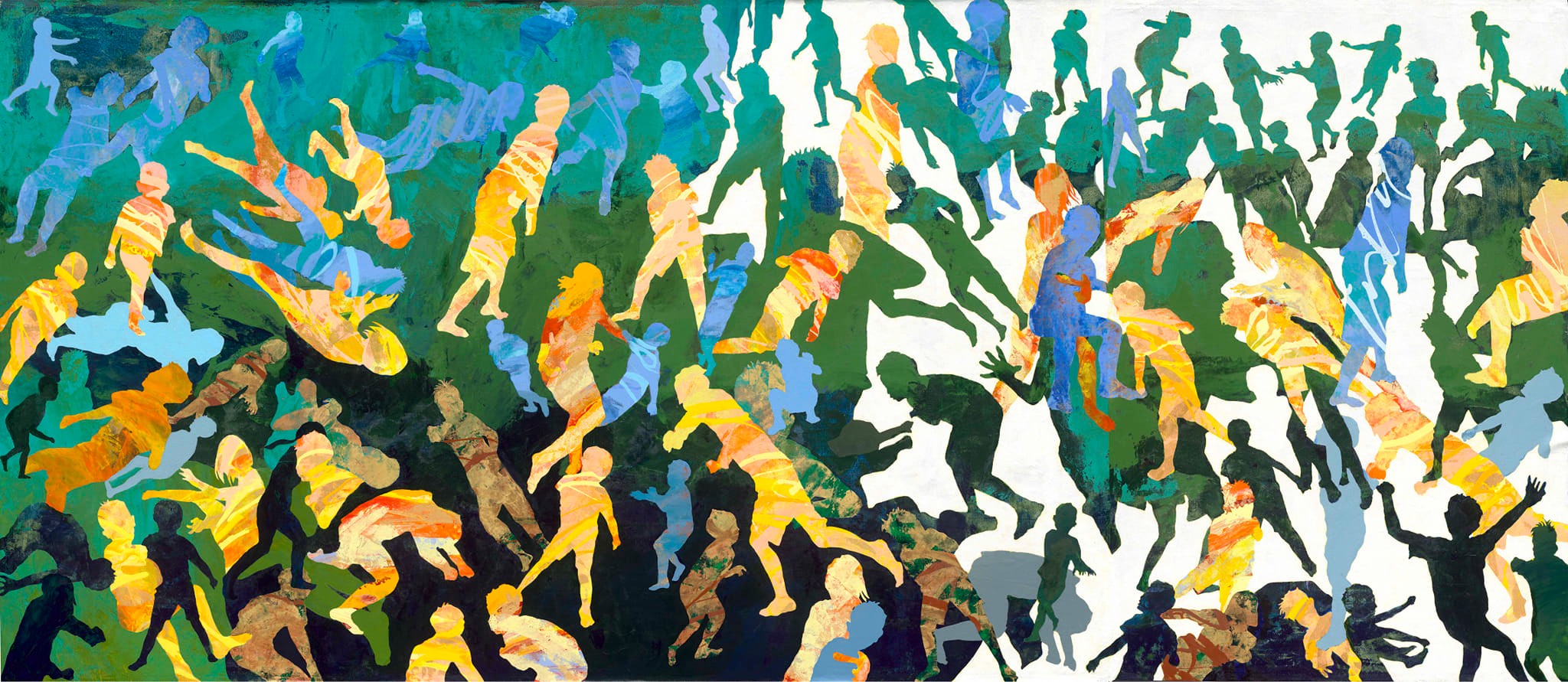Our Collective Visual Experience ─ Insights into LIN Kuei-Hua’s Artistic Creation
by LIN Hung-Hsin
When you meet Lin Kuei-Hua today, you encounter an elegant lady with an air of efficiency about her. With more than 30 years of business experience behind her, she picked up paintbrushes and pivoted her pursuit to art, her long-hidden passion. During her business career, she was based in the United States for some time and used the opportunity to study painting at a community college. Years later, when business was stable and her children had grown up, Lin made the choice to unleash her suppressed desire for artistic expressions and threw herself wholeheartedly into painting. Although Lin’s present socioeconomic conditions may evoke that of la grande bourgeoisie post-industrial revolution, she most closely embodies a fervent new talent with insatiable thirst for experimentation.
Every now and then, when Lin recounts her childhood, she seems to adopt the perspective of an outsider, cooly observing her own family from a distance. She reflects on her father’s strict and serious demeanor, the traditional and conservative values in rural households, and the ostensibly family-above-all-else yet controlling and co-dependent reality of her traditional Taiwanese family. Lin confides that she felt like the odd one out, often overlooked and easily forgotten. However, it might have been this sense of detachment that sharpened her powers of observation and shaped her understanding of the world around her. Hide and Seek appears as testament to those years when she was often overlooked within her own household. Thinking that nobody would notice, she secluded herself inside the closet, quietly listening to the activities around her. However, her exposed feet served as proof of her existence. The extensive use of blank space, combined with sharp black lines, dominates a substantial portion of the canvas, challenging conventional rules of composition. The effect places an emphasis on the lowermost area of the painting, which delicately and emotionally depicts the scene. In The Adventurer, a child is backlit, rendering the facial features and body parts unrecognizable. This silhouette functions as a vessel for individual emotional projections. Golden light scatters across the canvas and through use of bold, scraped strokes, Lin skillfully breaks up the blue shades that represent shadow in the composition. In Graffiti, the innocent expressions of the two children are a mixture of fear and helplessness as they were caught in the act. These are moments that many of us have experienced in childhood. The scene is depicted in cool tones and harsh outlines while the contrasting free doodles on the wall, in concert with the floral linen, spring forward and take center stage. As the viewer moves his/her gaze from one element to the other, a dialogue commences. Lin seems to prefer flattening the figures’ physical attributes, thereby inviting projections on the part of the viewer. This enables free association of a personal narrative.

Perhaps due to her long years of operating a business, Lin maintains a busy social calendar. As a natural extension of her inclination to observe those around her, scenes of social interactions and interpersonal relationships became a significant element in her artwork. Over the years, Lin has transitioned from her business career to painting full-time. Her observations such as family life, everyday vignettes, and social happenings, provide source material for her work. Lin is exterior to the frame, observing the scenes through photo lenses. The work Snapshot faithfully portrays the dining habits of our digital age, where mobile phones have taken on the role of tasting foods. Social media is flushed with an overabundance of food photos, a part of the zeigeist of our time. In Time Tunnel, the focus lies on the empty plates and tableware post-consumption, a true representation of the merrymaking at dinner parties. Unlike many artworks that depict social interactions by emphasizing the interpersonal dynamics, Lin’s intentionally flattened figures are delegated to supporting roles within the composition. Other works such as Going to School, First Encounter, Father Feeding Baby, and Comfort etc., reveal the warm and sensitive side of the artist as she captures new experiences in different stages of life. By deliberately omitting certain details and utilizing simple, large color spaces with unified color schemes, the paintings exude a sense of calm, lending a window into the artist’s view from afar. The artist carefully maintains a distance, refraining from interfering in the lives of her subjects. Nevertheless, the limited facial expressions of the figures in the paintings inadvertently disclose their deepest emotions. Lin’s calm analysis is evident in the layers of paint in her artwork. The seemingly spontaneous splashes, scrapes, and layers are the result of swift mental calculations, constructed inside predetermined confines. It is controlled chaos. Lin’s technique involves repeat cutting and layering of transparent vinyl sheets to create stencils, to which paint is subsequently applied. Using syringes, scrapers, rollers, or knives, the paints produce an effect reminiscent of printmaking, setting it apart from the characteristic texture of paintbrushes. The use of transparent stencils allows for careful consideration of color combinations with the underlying layers, granting the artist the freedom of movement anchored in having a visible point of reference.
Upon closer examination of Lin’s works, in Roaming, Image II, Excitement, Focus, One and only, Come on, Graffiti and others, the figures are presented in a similar hollowed-out or negative space style. Does this suggest missing pieces of her own personal memories? The composition primarily features colorful backgrounds and vibrant screen images, drawing the attention of the figures inward as well as the viewer’s gaze. It seems as if the figures have receded from the frame, when in fact, they have not. Stepping back, one sees the larger blank spaces clash with high chromaticity of the background, where the blank spaces then assert their command over the attention of one’s visual experience. The figures do not exhibit excessive poses or body language, instead, they share a uniform posture of staring at the screen. Even young children are captivated, no wonder “phubber” becomes a label of contemporary society. The phenomenon of families and friends phubbing during gatherings has become a cultural spectacle, reminiscent of British artist Richard Hamilton’s 1956 collage piece Just what is it that makes today’s homes so different, so appealing? This artwork similarly depicts and explores how the mass adoption of new technology had brought about changes in people’s lifestyles. However, in contrast to the satire and caricatures of Pop Art, Lin herself participates in this change, observing everything from the perspective of a documentary photographer. She faithfully portrays the scenes and outlines silhouettes of those in her painting, using the photographs only as a foundation of the outer edges of the world. Typical photographic elements such as light, shadow, texture, colors, and figurativism are removed and replaced with the artist’s own choices. It is interesting to note that the sharp-edged contours created by the vinyl templates in Lin’s work recall a visual experience similar to Hamilton’s collages that juxtaposed images from cut print materials (eg. advertisements and magazines). Lin and Hamilton are two kindred spirits in their observations of human behavior and social phenomena, in their pursuit of the novel and the innovative, and in delivering impact on the viewers.

This series of works encompasses various aspects of Lin’s everyday life, including family life, social functions, random snapshots, and street observations. Without exception, figures in the paintings are deeply engrossed in the use of electronic devices, unable to divert their attention from their screens. Internet addiction has become a widespread issue in modern society. According to the “2019 General Survey on Digital of People with Mobile Phones” released by the National Communications Commission (NCC), the percentage of mobile phone users in Taiwan accessing the internet through their devices has steadily increased. It rose significantly from 35.3% in 2011 to 88.2% in 2018, and further climbed to 89.8% in 2019.1 The internet has become the primary source for acquiring information and entertainment in people’s daily lives. With the rise of self-media and social networking platforms, as well as the versatility and convenience of web portals, accessing information from various websites has become effortless. We can watch the same videos, view the same images, and share a collective visual experience, forging a common “vision.” Through mobile phones and the internet, it seems as though humans have reconstructed a modern-day “Tower of Babel,” establishing a shared language through collective visual experiences. In Lin’s artworks, the allure of visual windows is clearly presented. Using paint on canvas (or frame) as her medium, she captures her observations of contemporary life and social phenomena in the “window,” a surface that has been explored by countless artists throughout history. The layers of vibrant colors intertwine and shift, creating a visual tapestry reminiscent of the captivating hues encountered when facing a screen. It can be said that Lin has created yet another window, capturing the individuals immersed in their small screens. Meanwhile, the viewers who observe her artwork become another group of spectators, captivated by a larger screen that is the canvas.
The aforementioned works primarily arise from observing human social patterns within the context of infatuated internet use, social activities and everyday life around the artist. These artworks still maintain a measure of narrative quality and follow traditional principles of figurative painting. However, Lin’s new works in 2023 can be described as a full commitment to portraiture and, in the process, developing a unique creative vocabulary. They resemble meticulously planned and highly rehearsed feasts, with new artistic expressions refined through previous experimentations. In the Children Series and Play Series, Lin further zeros in on postures, isolating interpersonal dynamics and discarding all irrelevant backgrounds. The children’s figures engaged in play exhibit a sense of uninhibited freedom, distinct from the adults’ controlled movements that are shaped by years of social conditioning. The type of inhibited freedom on display may have arisen from hidden rebelliousness and the inner child’s sense of play. The body movements are seemingly sampled at random and reassembled. Through asymmetrical and whimsical rearrangement of proportions, Lin breaks with space and perspective principles. Traditional senses of lighting and space occupation by bodies is replaced by repeatedly scraped layering of colors, leaving only the silhouettes to dictate visual flow. Finally, a rational and evenly applied white background forms a negative space that establishes a perimeter within which free brushstrokes and spontaneous drippings may whirl, careen, and take flight. It is worth noting the bold use of metallic colors here, infusing grandeur without being out of place, a clear demonstration of the artist’s mastery with color. Abundant layering, flattened figures, and continuous movements in the artwork resemble intricate codes within the composition. The concept of “Figure-ground Illusion” is cleverly employed. By abandoning traditional figurative painting elements, the work comes closer to the exploration of painting itself. Through imagery, composition, brushstrokes, colors, textures, and more, the artist contemplates the essence of painting. This self-inquiry inevitably emerges as painting and/or artists reach beyond a certain stage of exploration in their artistic journey.
Through numerous conversations and following of Lin’s works over time, I have witnessed the distillation of her artistic vision as it evolved, as well as her joy in discovery of new frontiers. Most notably is Lin’s dedication to figurative painting. Every time I visited her studio, her undeniable enthusiasm is palpable, resembling a chef orchestrating a grand feast for the first time, presenting dish after dish that are vibrant in color, aroma, and taste. The highly prolific artist is remarkable in her boundless creative energy. Lin is constantly innovating, refusing to limit herself to past routines. For her, although repetition in expression is tedious and unbearable, Lin exemplifies the utmost discipline in her work ethics day in and day out. It is this unwavering commitment to her craft that defines the path that all artists must embrace.



